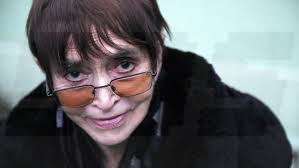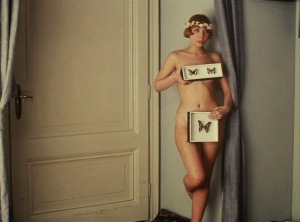For a recent book-sharing with a group of irreverent friends (archventures), I had the wish to share so many books that I instinctively reached more or less blindly into one of my shelves. Books in my home, I must add, are in a muddle. The only order to speak of is their relationship to each other through time. I picked Alice in Wonderland and Mind and Nature. During our afternoon of reading there was not enough time to do honour to the latter, Gregory Bateson’s work. So I said I’d write up something. Oh dear. After pages and pages, I finally recalled this was supposed to be a blog-post, not a novel .
I first came upon Gregory Bateson books, ‘Steps to an Ecology of Mind’ and ‘Mind and Nature,’ during the early 1980’s, after his death. The clarity of his notion that biological forms arrange themselves through relationships struck a deep chord. What totally resonated with me was his thought that the structure of nature and the structure of mind are reflections of each other. He had a broad perspective for a Biologist, and wanted to build a bridge between the facts of life and behaviour, and what we know of the nature of pattern and order. He was active in, and connected up many different fields of study – anthropology, psychiatry, biological evolution and genetics and the new epistemology which comes out of system-theory and ecology. He challenged basic assumptions and methods of scientific investigations, pointing to the processes beneath structures. He quoted Goethe …
A stem is what bears leaves
A leaf is that which has a bud in its angle
A stem is what was once a bud in that position …
And he provoked new thinking: ‘What pattern connects the crab to the lobster and the orchid to the primrose and all four of them to me. And me to you?’ 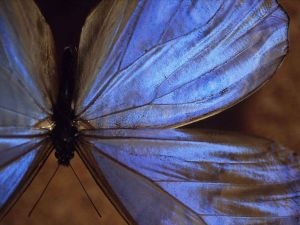
His interest in morphology, the study of structure and form of organisms, involved context, meaning and communication. He distrusted reductive models of cause and effect, the scientific approach that lines up parts and classifies them, focussing on quantity.
Comparing systems, one to another, he perceived the mind as an ecological system. And he used the analogy that ideas, like seeds, can only take root and flourish according to the nature of the system receiving them. This thought alone deserves deep contemplation.
He had a way with stories … ‘There was a man who had a powerful computer, and he wanted to know whether computers could ever think. So he asked it – Will you ever be able to think like a human being? – The computer clicked and rattled and blinked, and finally it printed out its answer on a piece of paper, as these machines do. The man ran to pick up the printout, and there, neatly typed, read the following words: ‘That reminds me of a story.’

Concerned about the decimation of aboriginal populations (he did field-work with Margaret Mead), the degradation of ecological systems, economic oppression, and senseless wars and arms races, he took these ominous signs of contemporary life to be manifestations of deeper disorders, which he defined in terms of cybernetic systems of communication and meaning that comprise life, mind, and society. In his view, consciousness dominated by purposeful thought has a linear structure that establishes goals and ways for attaining them without being necessarily sensitive to the circular network of cause and effect that orders the systems.
Looking at human consciousness as an adaptive system, he thought the cure for its inadequacies, evidenced by the negative side-effects of purposive rationality, was not to reject it in favour of a passionate non- rationality, as in the extreme romantic position, but to augment and complete it by engaging with non-discursive, pattern-comprehending and emotional processes. He advocated the befriending of the unconscious aspects of the mind through utilising images and metaphors.
In a civilization which separates mind from body, mythologies about the survival of a transcendent mind are often meant to soften the idea of death, or even deny death as part of life. For Bateson, who saw the mind as being immanent not only in pathways of information which are located inside the body but also in external pathways, death took on a different aspect. ‘The individual nexus of pathways which I call ‘me’ is no longer so precious because that nexus is only part of a larger mind. The ideas which seemed to be me can also become immanent in you. May they survive, if true.’ (Afterword to a collection of celebratory essays, 1972)
Yet there are scientists that can no more perceive the language of nature, and politicians who feel beleaguered by sections of society that seek balance and a fresh context towards ‘an ecology of mind.’ The extreme factions of believers, for what else are they, should look again at the bridge Bateson prepared.
This lovely video gives a taste of what it is all about :
Update … I discovered recently, in 2019, that some the links in this post don’t seem to work anymore. Here , however, is his daughter’s great documentary on Vimeo, unfortunately not free, apart from the trailer. https://vimeo.com/ondemand/bateson
Looking at the structure of nature and the structure of mind being reflections of each other, it becomes obvious that not only does nature mirror our habit of thinking, but our thinking also mirrors the state of nature. Ecology and psychology must therefore both engage in listening, and seeing, and working ceaselessly towards the integration of knowledge and the re-adjustment of a dynamic balance.
I could go on, but want to bring in a famous painting of Icarus by Brueghel. Anthony Stevens, a brilliant expositor of Jung’s thought, used the painting as cover for the first hard-cover edition (1995) of his book Private Myths.
http://www.anthonystevens.co.uk/index.html

Stevens quotes from a poem by Wystan Auden:
In Brueghel’s Icarus, for instance: how everything turns away
Quite leisurely from the disaster; the ploughman may
Have heard the splash, the forsaken cry,
But for him it was not an important failure; the sun shone
As it had to on the white legs disappearing into the green
Water; and the expensive delicate ship that must have seen
Something amazing, a boy falling out of the sky,
Had somewhere to get to and sailed calmly on.
What goes up must come down. Who knows how many Big Bangs there were before the one we so ardently explore? There is an organising intelligence behind life’s cycles, while consciousness forever expands. Thinking in metaphors we can perceive similar patterns, forms in nature and mind, cosmos and psyche, mirroring each other across scale and time. In other words, life teems with realities we can tune into, as long as we assign context and meaning.
Check out Gregory Bateson’s books ‘Steps to an Ecology of Mind’ and ‘Mind and Nature.’
His family continue his work: His daughter Nora and his wife – Mary Catherine Bateson: http://www.interculturalstudies.org/main.html
Peripheral Vision
http://www.amazon.com/exec/obidos/tg/detail/-/0060926309/mead2001centenni
Free chapters of Angels Fear: http://www.oikos.org/angelsfear.htm
Nora Bateson, recently created a film:
http://www.anecologyofmind.com/
Last not least, the themes: pattern which connects, mirroring and bridging, are subjects of my novels.


 Marrakech airport, 16th Dec 2007 … new arrivals are greeted by hundreds of placards. I scan the display showing names of people, Hotels, and Riads, until I spot Dar Pangal, my Riad. In the rush my top heavy case topples and grazes a man’s toes. He shouts an avalanche of abuse, in French. I say, ‘Sorry,’ which raises his blood pressure even more. My understanding of French being embarrassingly basic, I do grasp the questions he hurls at me like projectiles. ‘Where do you come from? Why do you come here?’ His insolence finally riles me. ‘Why do you want to know?’ I ask. He snaps back in English, ‘Shut up.’ Young Saladin, who will bring me to my Riad in the Medina, casts his eyes to heaven and shrugs his shoulders, so do I.
Marrakech airport, 16th Dec 2007 … new arrivals are greeted by hundreds of placards. I scan the display showing names of people, Hotels, and Riads, until I spot Dar Pangal, my Riad. In the rush my top heavy case topples and grazes a man’s toes. He shouts an avalanche of abuse, in French. I say, ‘Sorry,’ which raises his blood pressure even more. My understanding of French being embarrassingly basic, I do grasp the questions he hurls at me like projectiles. ‘Where do you come from? Why do you come here?’ His insolence finally riles me. ‘Why do you want to know?’ I ask. He snaps back in English, ‘Shut up.’ Young Saladin, who will bring me to my Riad in the Medina, casts his eyes to heaven and shrugs his shoulders, so do I.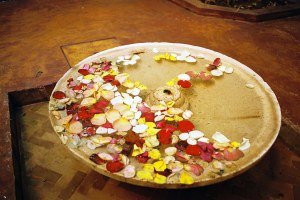 Turning into a narrow backstreet, we arrive at Dar Pangal. The inner courtyard is an island of peace. Julio offers a warm welcome. He’s South American, but spent years in Paris, working as a designer. He likes Werner Herzog films, and once met Klaus Kinsky. Eccentric people fascinate him. I reveal how I worked for some of these eccentric people in the past. On that wavelength we share reminiscences over mint tea. Using a mobile and texting is a new experience for me. Somewhat nervous, I practice sending messages to
Turning into a narrow backstreet, we arrive at Dar Pangal. The inner courtyard is an island of peace. Julio offers a warm welcome. He’s South American, but spent years in Paris, working as a designer. He likes Werner Herzog films, and once met Klaus Kinsky. Eccentric people fascinate him. I reveal how I worked for some of these eccentric people in the past. On that wavelength we share reminiscences over mint tea. Using a mobile and texting is a new experience for me. Somewhat nervous, I practice sending messages to  Ulla, Ruth and Zohra. Connections work well. A hot shower also works well, and helps me to sleep after a long day.
Ulla, Ruth and Zohra. Connections work well. A hot shower also works well, and helps me to sleep after a long day.
 notice that most people don’t like to be photographed without permission, which I respect. The plenty starved cats have no objection.
notice that most people don’t like to be photographed without permission, which I respect. The plenty starved cats have no objection. their fare the men wedge me into the backseat. Pressure of time cancels choice, so I trust the arrangement. Magnificent white clouds over the Atlas Mountains compensate. A short cigarette stop provides a memorable photo. After an hour being cramped together, the men invite me to mint tea and pancakes. We communicate in made-up language, hand gestures and smiles.
their fare the men wedge me into the backseat. Pressure of time cancels choice, so I trust the arrangement. Magnificent white clouds over the Atlas Mountains compensate. A short cigarette stop provides a memorable photo. After an hour being cramped together, the men invite me to mint tea and pancakes. We communicate in made-up language, hand gestures and smiles. I meet up with Ulla, her van and her dog family, a Dalmatian, Leila, and an adorable adopted Moroccan street dog, Ali, in the parking area of Marjane Shopping Mall. I had visited Ulla’s home a year earlier, refreshing a connection from eventful past decades that combined in our memory. Besides, there was our joint mother tongue. Mine had become rusty. Being challenged to speak German brought not only forgotten words to the surface, but also forgotten experiences. Where I can
I meet up with Ulla, her van and her dog family, a Dalmatian, Leila, and an adorable adopted Moroccan street dog, Ali, in the parking area of Marjane Shopping Mall. I had visited Ulla’s home a year earlier, refreshing a connection from eventful past decades that combined in our memory. Besides, there was our joint mother tongue. Mine had become rusty. Being challenged to speak German brought not only forgotten words to the surface, but also forgotten experiences. Where I can  be hesitant and avoid conflict, she has a no-nonsense manner, often with an edge I admire. Shouting the name ‘Ali’ down the road for your dog to behave, is potentially asking for trouble, that is, in Morocco. The predictable raised eyebrows before the penny drops remind me of childhood pranks my mother used to censor. We make an interesting pair of travellers.
be hesitant and avoid conflict, she has a no-nonsense manner, often with an edge I admire. Shouting the name ‘Ali’ down the road for your dog to behave, is potentially asking for trouble, that is, in Morocco. The predictable raised eyebrows before the penny drops remind me of childhood pranks my mother used to censor. We make an interesting pair of travellers.

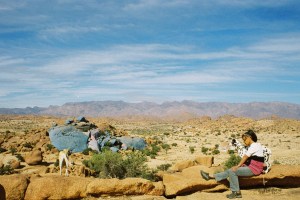
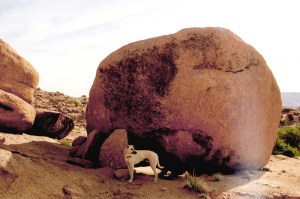
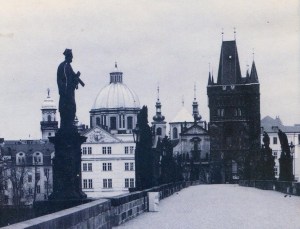 I was in Prague. My then companion, for his birthday celebration, had organised a small group of friends to spend a weekend in this beautiful city, coinciding with the moon landing. We could afford a 5 star hotel, due to a bargain currency exchange rate in the wake of the short-lived
I was in Prague. My then companion, for his birthday celebration, had organised a small group of friends to spend a weekend in this beautiful city, coinciding with the moon landing. We could afford a 5 star hotel, due to a bargain currency exchange rate in the wake of the short-lived 
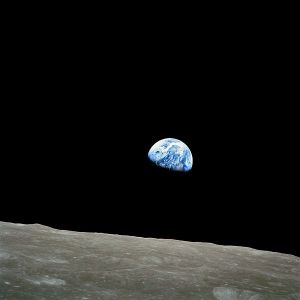
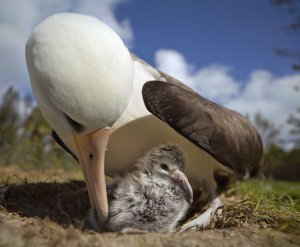 Truly witnessing the tragedies on our planet is not the same as passive looking, witnessing expands and transforms consciousness. As an individual I feel helpless, unable to solve the overwhelming problems, but by witnessing and accepting the sad truth of what is happening, and by grieving the losses, I, each of us, in a small way, can contribute towards a necessary and crucial paradigm shift.
Truly witnessing the tragedies on our planet is not the same as passive looking, witnessing expands and transforms consciousness. As an individual I feel helpless, unable to solve the overwhelming problems, but by witnessing and accepting the sad truth of what is happening, and by grieving the losses, I, each of us, in a small way, can contribute towards a necessary and crucial paradigm shift.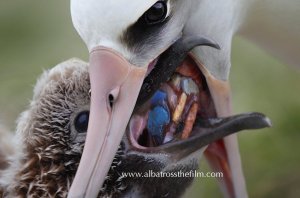 Some scenes near the end of the film bring home powerful metaphors – like what it takes to fly. Fledglings, to lighten their weight, must empty their stomachs of everything fed to them by their parents (in this instant plastic.) Mothers, forgive yourselves. We can hardly avoid dumping stuff on your offspring, be it psychic or material. Many fledglings don’t manage, but if lucky, and if the right wind comes along, their wings will carry them across the sea towards their adult adventure.
Some scenes near the end of the film bring home powerful metaphors – like what it takes to fly. Fledglings, to lighten their weight, must empty their stomachs of everything fed to them by their parents (in this instant plastic.) Mothers, forgive yourselves. We can hardly avoid dumping stuff on your offspring, be it psychic or material. Many fledglings don’t manage, but if lucky, and if the right wind comes along, their wings will carry them across the sea towards their adult adventure.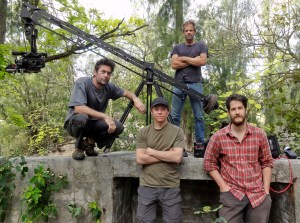

 The genus Rosa, according to fossil evidence, is 35 million years old and begun to be cultivated circa 5000 years ago. Due to its tessellated structure, dome-like shape and its delightful perfume, the rose has become a symbol of the heart, of wholeness, love, beauty and perfection the world over, frequently with mystical connotation, and often highly stylised, as in Islamic art.
The genus Rosa, according to fossil evidence, is 35 million years old and begun to be cultivated circa 5000 years ago. Due to its tessellated structure, dome-like shape and its delightful perfume, the rose has become a symbol of the heart, of wholeness, love, beauty and perfection the world over, frequently with mystical connotation, and often highly stylised, as in Islamic art.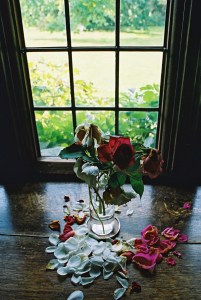 While fear of loss and abandonment engenders life, it also draws us towards the mystery of infinite consciousness, the one being with countless names. Various practices, derived from spiritual traditions, can calm a turbulent mind enough for a glimpse of harmony beyond divisions. For a while, at least, we sense the larger presence, the effortless zone, the flow – and given patience, come to realise that consciousness is what we are.
While fear of loss and abandonment engenders life, it also draws us towards the mystery of infinite consciousness, the one being with countless names. Various practices, derived from spiritual traditions, can calm a turbulent mind enough for a glimpse of harmony beyond divisions. For a while, at least, we sense the larger presence, the effortless zone, the flow – and given patience, come to realise that consciousness is what we are.
